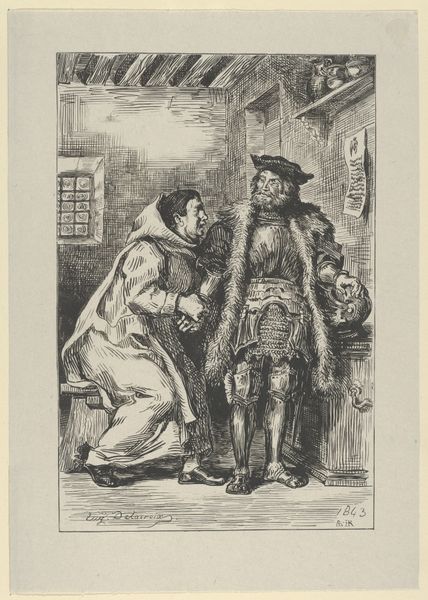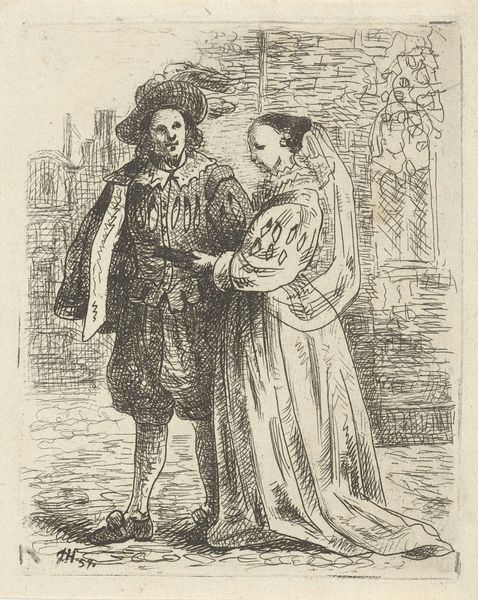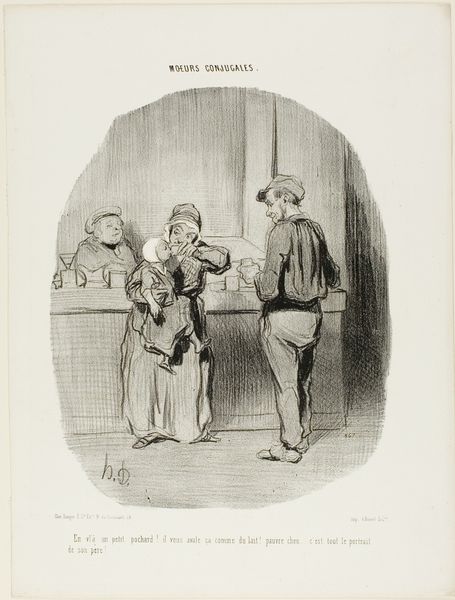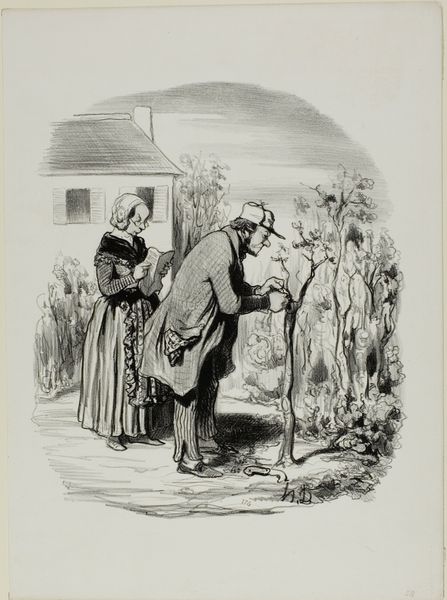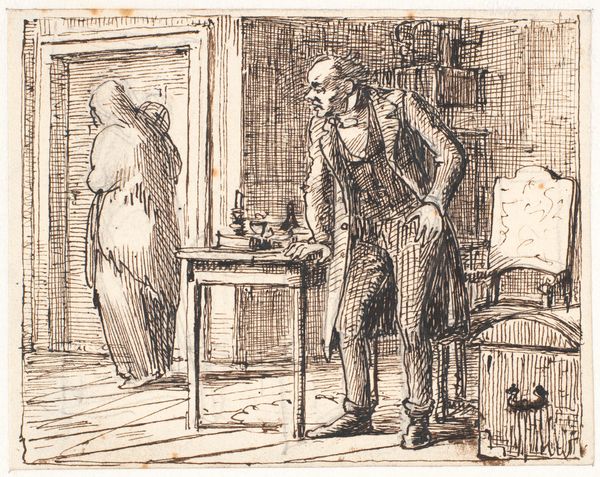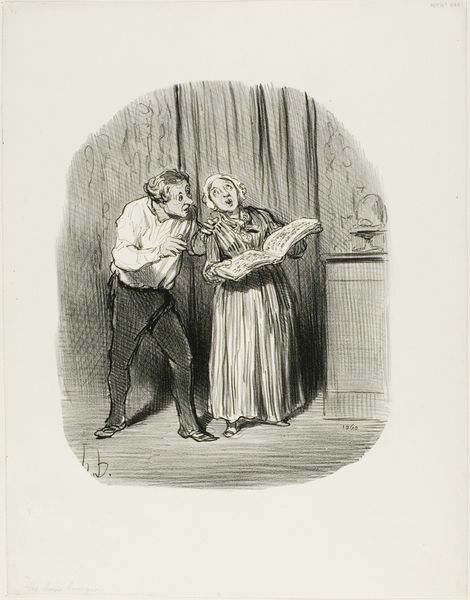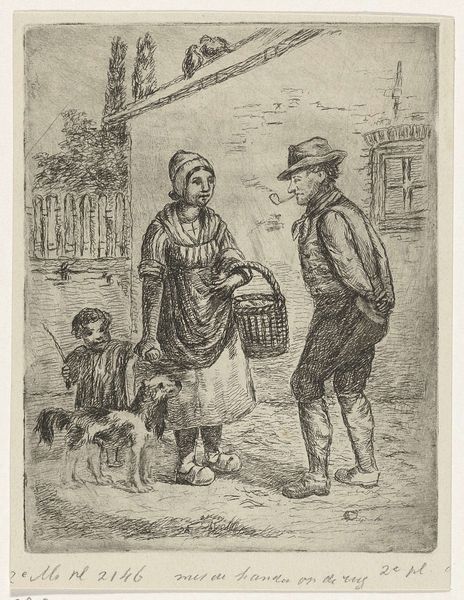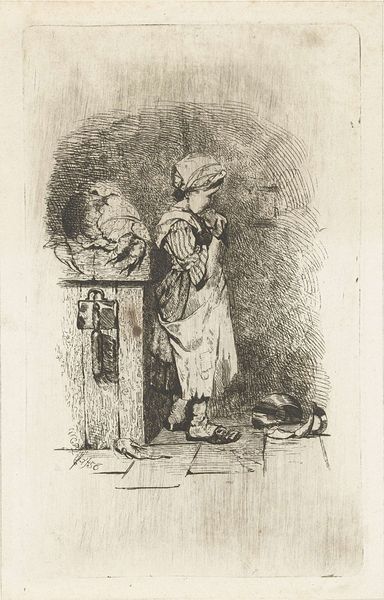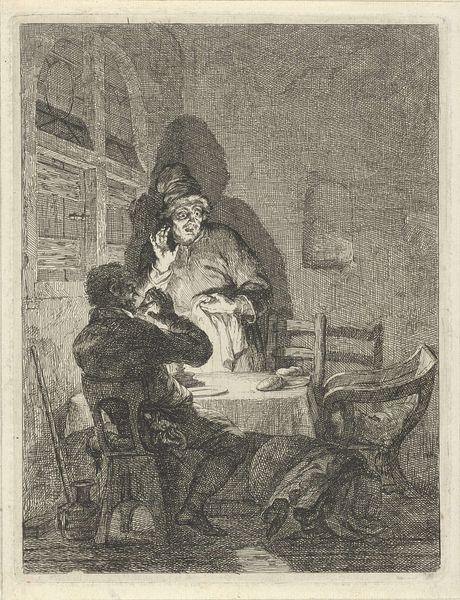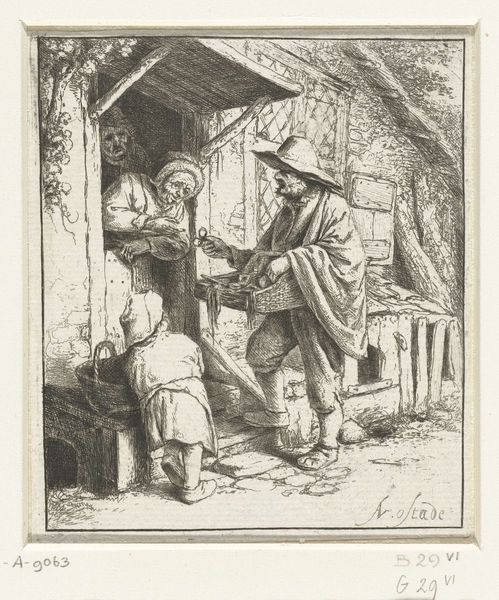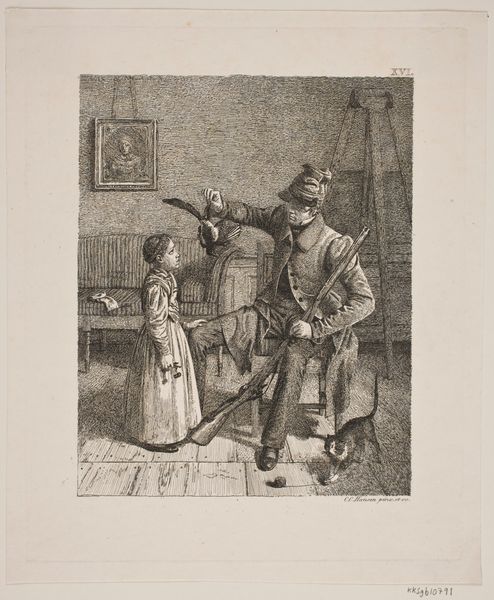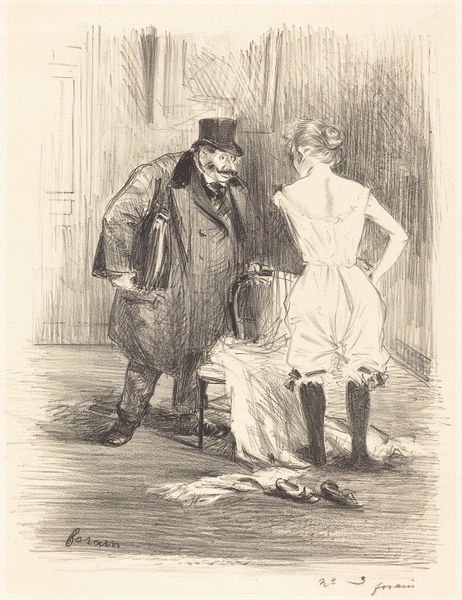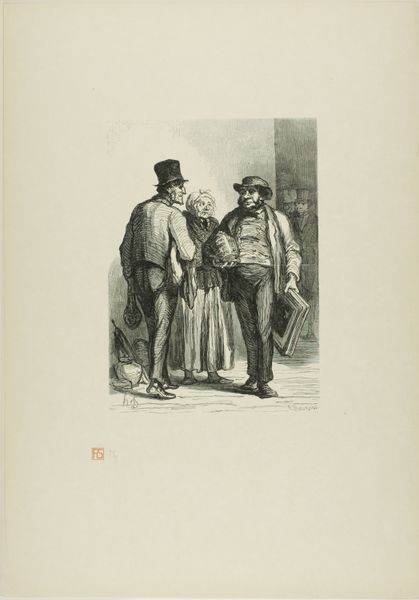
“Ha! Dammmmmnit wife... how much funnn we had when we were eighteen.... no men no women..... just us people from Auvergne,” plate 5 from Vulgarités 1841
0:00
0:00
drawing, lithograph, print, paper
#
drawing
#
aged paper
#
16_19th-century
#
lithograph
# print
#
caricature
#
paper
#
france
#
genre-painting
Dimensions: 241 × 195 mm (image); 325 × 247 mm (sheet)
Copyright: Public Domain
Curator: This lithograph, titled "\u201cHa! Dammmmmnit wife... how much funnn we had when we were eighteen.... no men no women..... just us people from Auvergne,\u201d" comes from Honoré Daumier's series "Vulgarités," dating to 1841. Editor: Immediately, I'm struck by the contrast in Daumier's mark-making. The left side of the image, filled with what I assume are barrels, dissolves into a chaotic density of marks. It almost seems to be disappearing in the darkness, versus the expressive figural linework on the right. Curator: That dichotomy of the dark background versus a character bathed in a sort of satirical spotlight underscores the subject, right? Look at the way Daumier employs lithography to tease out those details—the texture of the man's clothing, for instance, and the crinkled lines around his eyes that emphasize his reminiscence. Editor: Exactly. He wasn't after mere illustration; he's utilizing the tonal capabilities afforded by lithography to depict class. His coarse garments and hunched posture contrast sharply with her simpler, possibly home-spun attire. It brings into question ideas around domestic labor and the social function of clothing. Curator: Consider too, the title itself. It points to the broader project of "Vulgarités," a collection focusing on the 'common,' perhaps even crass aspects of daily life. The plate reflects upon shared identity through the lens of reminiscence, poking fun at both regionalism and romanticization. Editor: I find that word—‘vulgarités’—fascinating because it challenges typical hierarchies. What is considered ‘high’ or ‘low’ art? What is being critiqued about French society, about regional stereotypes? The use of text, in the figure's words, grounds it, as if it could have been a scene lifted directly from the streets. Curator: Ultimately, Daumier leverages the reproducibility of lithography to broadcast such societal observations, sparking discussions about identity, nostalgia, and perhaps even the fabrication of memory through his particular lens. Editor: This allows us to understand how materials can convey political or social ideas. Seeing how Daumier utilized lithography challenges the hierarchy between the high-minded sketch, or finished oil painting, to the daily churn of images on paper. Curator: Agreed. I believe it is that careful orchestration of form and content that positions Daumier as more than a caricaturist; he becomes a visual commentator on the pulse of a rapidly evolving France. Editor: Precisely. The intersection of material processes with its political messaging has me reflecting about how Daumier embraced art's potential for social transformation through accessible media.
Comments
No comments
Be the first to comment and join the conversation on the ultimate creative platform.
